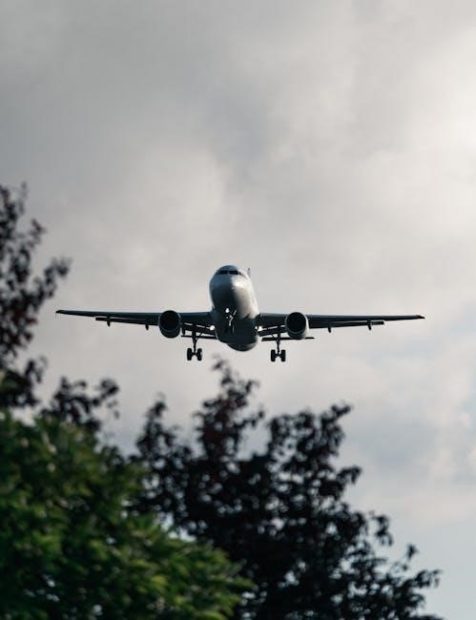William Golding’s Lord of the Flies is a timeless exploration of human nature, civilization, and savagery; The novel, available as a free PDF, remains a significant educational resource, offering insights into societal structures and moral dilemmas through its gripping narrative.
1.1 Overview of the Novel
Lord of the Flies, written by William Golding, is a gripping tale of survival and morality. The story follows a group of British boys stranded on an uninhabited island after a plane crash. As they attempt to govern themselves, the novel explores themes of civilization, savagery, and human nature. The free PDF version of the book is widely available, making it accessible for readers to delve into its profound psychological insights and timeless relevance to societal structures and moral dilemmas.
1.2 Historical Context of the Book
Written in 1954 by William Golding, Lord of the Flies reflects the post-World War II era’s anxieties about human nature and societal collapse. The novel, available as a free PDF, explores themes of civilization and savagery, influenced by Golding’s experiences in the Navy and the Cold War’s political instability. Initially modest in success, the book gained popularity in the late 1950s, resonating with its critique of human behavior and moral decay, making it a timeless classic in literary history.
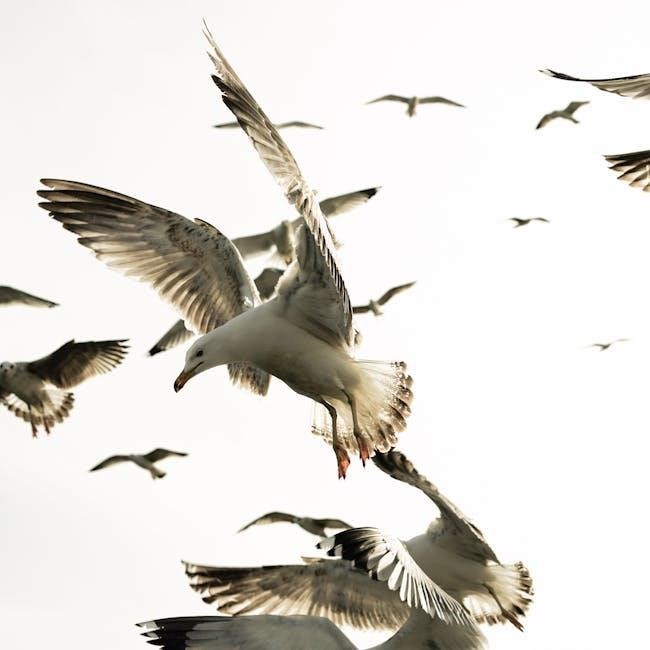
Themes and Symbolism in “Lord of the Flies”
Lord of the Flies explores human nature, civilization, and savagery, with symbols like the conch shell representing order and the beast embodying fear. Available as a free PDF, it delves into power struggles and moral decay, offering profound insights into societal structures and individual behavior, making it a vital educational resource for literary analysis and philosophical reflection.
2.1 Civilization vs. Savagery
In Lord of the Flies, the conflict between civilization and savagery is central, as boys stranded on an island gradually abandon moral constraints. The conch shell symbolizes order, while the “beast” embodies primal fears. Initially, the boys attempt to mimic societal norms, but without adult supervision, they descend into chaos. This duality highlights Golding’s exploration of human nature, revealing how quickly civilization can erode, unleashing innate savagery. The novel, available as a free PDF, serves as a stark reminder of humanity’s fragile moral framework.
2.2 The Role of Power and Leadership
In Lord of the Flies, power and leadership dynamics drive the narrative, as characters like Ralph and Jack embody contrasting leadership styles. Ralph, the democratically chosen leader, emphasizes collective well-being and order, symbolized by the conch shell. Jack, however, pursues power through fear and control, prioritizing hunting and dominance. Their struggle reflects the tension between cooperative leadership and authoritarian rule, ultimately leading to the group’s fragmentation. The novel, available as a free PDF, explores how leadership shapes societal structures and human behavior under stress.
2.3 Fear and Superstition
Fear and superstition are central to the boys’ descent into chaos in Lord of the Flies. The mysterious “beast” becomes a shared fear, fueling paranoia and division. As the novel progresses, the boys’ belief in the beast grows, symbolizing their inner primal instincts. This fear is exploited by leaders like Jack, who use it to manipulate and control. The free PDF version of the book highlights how fear erodes rationality, leading to savagery and the collapse of their makeshift society, revealing the darker aspects of human nature.
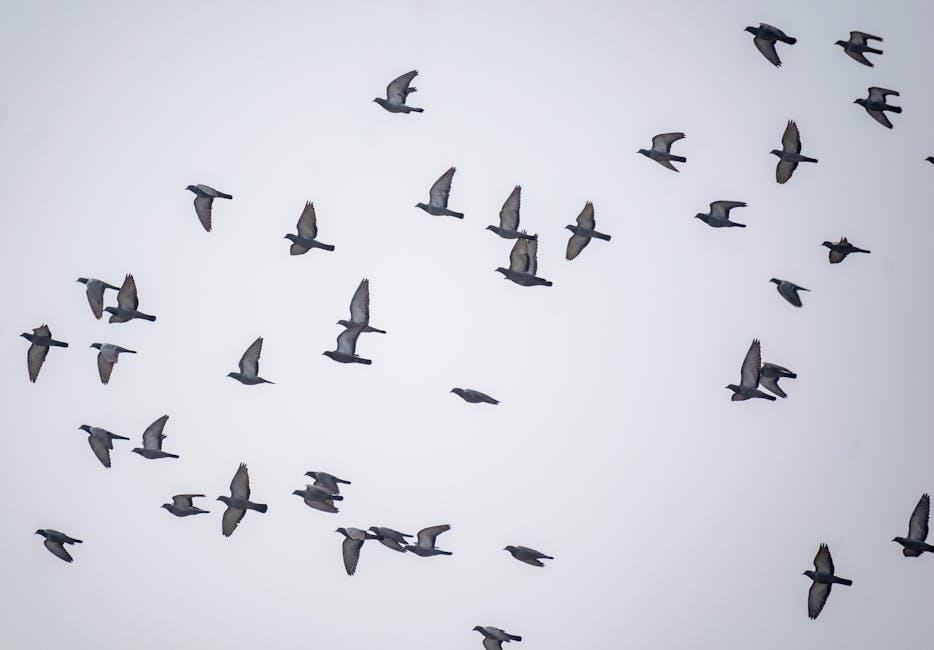
Main Characters in “Lord of the Flies”
The novel features Ralph, Jack, Piggy, Simon, and Roger, each embodying distinct traits that drive the story. Ralph symbolizes democracy, Jack represents power, Piggy intelligence, Simon truth, and Roger brutality. The free PDF highlights their roles in exploring human nature and societal collapse.
3.1 Ralph: The Democratic Leader
Ralph, the protagonist, embodies democracy and order. Elected as the leader, he strives to maintain civility and organize the boys. The conch shell symbolizes his authority, allowing speech equality. His focus on building shelters and maintaining a signal fire reflects practicality. However, as the novel progresses, Ralph’s leadership is challenged by Jack’s desire for power. The free PDF highlights Ralph’s internal conflict between maintaining order and succumbing to primal instincts, ultimately revealing his disillusionment with humanity’s true nature.
3.2 Jack Merridew: The Hunter
Jack Merridew, initially the choir leader, evolves into a ruthless hunter driven by primal instincts. His obsession with hunting pigs symbolizes his descent into savagery. The free PDF reveals how Jack’s leadership of the hunters challenges Ralph’s authority, leading to tribal division. His desire for power and control ultimately consumes him, embodying the novel’s theme of civilization vs. savagery. Jack’s transformation highlights the darker aspects of human nature, making him a pivotal character in Golding’s exploration of societal collapse.
3.3 Piggy: The Voice of Reason
Piggy, the intelligent and rational member of the group, represents logic and wisdom. Despite his physical limitations, he uses the conch shell to advocate for order and civility. His ideas, such as building shelters, often go unappreciated, reflecting how reason is frequently overlooked in chaotic situations. Piggy’s loyalty to Ralph and his commitment to democracy highlight his role as the moral compass. His tragic demise symbolizes the loss of rationality and the descent into savagery, making him a poignant figure in Golding’s exploration of human nature.
3.4 Simon: The Truth-Seeker
Simon, the quiet and introspective boy, embodies innocence and wisdom. He discovers the truth about the “beast,” realizing it is a dead pilot, not a monster. His solitary nature allows him to see beyond the group’s fears, symbolizing clarity and rationality. Simon’s tragic death, mistaken as the beast, underscores the loss of innocence and the descent into chaos. His character serves as a moral anchor, highlighting the destructive nature of fear and superstition in the absence of truth and understanding.
3.5 Roger: The Enforcer
Roger, a quiet yet sadistic boy, evolves into a ruthless enforcer under Jack’s rule. He uses violence to assert power, symbolizing the dangers of unchecked aggression. His loyalty to Jack and enjoyment of causing pain highlight the darker aspects of human nature. Roger’s actions, such as tormenting the “littluns” and killing Piggy, showcase the collapse of moral boundaries. His character represents the primal instincts that emerge when societal constraints are removed, embodying the novel’s themes of savagery and the loss of innocence.
Plot Summary of “Lord of the Flies”
Stranded after a plane crash, British boys descend from order to chaos, exploring themes of power, fear, and survival, ultimately rescued after their civilized facade crumbles.
4.1 The Crash and Initial Setup
A plane carrying British boys crashes during an unspecified war, stranding them on an uninhabited island. With no adults, the group must fend for themselves. The novel begins with Ralph and Piggy discovering each other, setting the stage for their attempts to create order. The boys, aged 6 to 12, explore their new surroundings, unaware of the challenges ahead. The crash site and nearby lagoon become central locations, symbolizing both survival and the eventual descent into chaos.
4.2 The Conch Shell and Rules
The conch shell, discovered by Piggy, becomes a symbol of order and democracy. Ralph uses it to call meetings, ensuring only one person speaks at a time. The boys establish rules, like the importance of the fire for rescue, to maintain civility. The conch’s power grows, representing authority and unity. However, as the novel progresses, its influence wanes, reflecting the group’s descent into chaos and the erosion of their initial attempts at governance and cooperation.
4.3 The Beast and Fear
The boys’ fear of the “Beast” escalates, fueled by paranoia and superstition. They believe a mysterious creature inhabits the island, leading to chaotic behavior. Ralph and Jack disagree on whether to focus on rescue or hunting the Beast. The fear intensifies during a chaotic night, with the group’s anxiety reaching a peak. This collective fear drives the boys further from civilization and toward savagery, highlighting the destructive power of unchecked fear and the fragility of their societal structure.
4.4 The Split and Tribalism
The group’s unity fractures as fear and power struggles intensify. Jack, obsessed with hunting, forms his own tribe, luring many boys with promises of meat and freedom. Ralph’s group, focused on rescue, dwindles. The split symbolizes the collapse of civility, as Jack’s tribe embraces savagery, painting faces and engaging in ritualistic behaviors. Tribalism deepens, leading to open conflict and the erosion of moral boundaries, highlighting the boys’ descent into primal instincts and the loss of their initial civilized order.
4.5 The Final Confrontation
The novel reaches its climax as Ralph, hunted by Jack’s tribe, flees through the island’s burning landscape. The conch shell, once a symbol of order, is destroyed. Ralph, exhausted and desperate, seeks refuge near the shore, where a naval officer unexpectedly arrives, ending the chaos. The officer’s presence restores order, contrasting sharply with the boys’ descent into savagery. The confrontation underscores the fragility of civilization and the enduring power of primal instincts, leaving a haunting reflection on human nature.

Availability of “Lord of the Flies” in PDF Format
Lord of the Flies is widely available in PDF format through legal sources like Archive.org and educational platforms. Readers can access the novel for free or purchase it digitally.
5.1 Legal Sources for Download
Several legal platforms offer Lord of the Flies in PDF format for free or purchase. Archive.org provides free access through its digital library, while platforms like Project Gutenberg and Google Books offer downloadable versions. These sources ensure safe and lawful access to the novel, supporting educational purposes and personal reading; Always verify the legality of downloads to avoid copyright infringement.
5.2 Popular Platforms for Access
Popular platforms like Internet Archive and ResearchGate offer free PDF downloads of Lord of the Flies. Educational websites and digital libraries also provide access, often requiring a subscription or free sign-up. These platforms ensure easy and convenient access to the novel, making it widely available for readers and students. Always check the platform’s terms of use to ensure legal and safe downloading.

Literary Analysis of “Lord of the Flies”
William Golding’s Lord of the Flies is analyzed through various lenses, including Freudian psychoanalysis, Marxist interpretations, and feminist perspectives, exploring human nature and societal structures.
6.1 Freudian Psychoanalysis
Freudian psychoanalysis explores the subconscious motivations of Lord of the Flies characters, aligning with Sigmund Freud’s theories of the Id, Ego, and Superego. Jack represents the primal Id, driven by instinct and power, while Ralph embodies the Ego, striving for order. Piggy, symbolizing the Superego, advocates for morality and rules. The novel critiques Freud’s views by showing how primal instincts dominate when societal constraints fade, highlighting the fragility of civilization. This perspective deepens understanding of human nature in Golding’s narrative, available in free PDF formats for further analysis.
6.2 Marxist Interpretation
A Marxist interpretation of Lord of the Flies reveals class struggle and power dynamics among the boys. Jack’s desire for control mirrors capitalist exploitation, while Ralph’s democratic ideals symbolize a failed proletariat uprising. The novel critiques hierarchical systems, showing how resource distribution and fear manipulate power. The free PDF availability of the book allows readers to explore these themes, highlighting how societal structures influence human behavior and the inevitable corruption of power, reflecting Marxist theories on class conflict and economic inequality.
6.3 Feminist Perspective
A feminist reading of Lord of the Flies highlights the absence of female characters, symbolizing the exclusion of women’s voices in societal structures. The novel’s focus on male-dominated power struggles critiques patriarchal norms, as the boys’ behavior reflects ingrained gender roles. The free PDF availability of the book enables readers to explore these themes, emphasizing how the lack of female representation underscores the novel’s commentary on male-centered narratives and the broader societal implications of gender exclusion in literature and culture.
Adaptations of “Lord of the Flies”
Lord of the Flies has been adapted into films, stage productions, and TV series, including a notable TV adaptation by Eleven and BAFTA-winning writer Jack Thorne, bringing its themes to new audiences while remaining faithful to Golding’s original vision.
7.1 Film Adaptations
Lord of the Flies has been adapted into several films, including the 1963 version by Peter Brook and the 1990 adaptation by Harry Hook. These films capture the novel’s themes of savagery and civilization, staying true to Golding’s vision while bringing the story to life on screen. A new TV adaptation by Eleven and BAFTA-winning writer Jack Thorne is also in development, promising to introduce the classic tale to modern audiences.
7.2 Stage Productions
Lord of the Flies has been adapted into numerous stage productions, with notable versions like Anthony Laus’s stark staging, which brings the novel’s themes to life. These adaptations often emphasize the struggle between civilization and savagery, staying faithful to Golding’s original narrative. The play’s universal appeal makes it a popular choice for schools and theaters, offering a gripping exploration of human nature. Its theatrical interpretations continue to captivate audiences, reinforcing the novel’s timeless relevance.
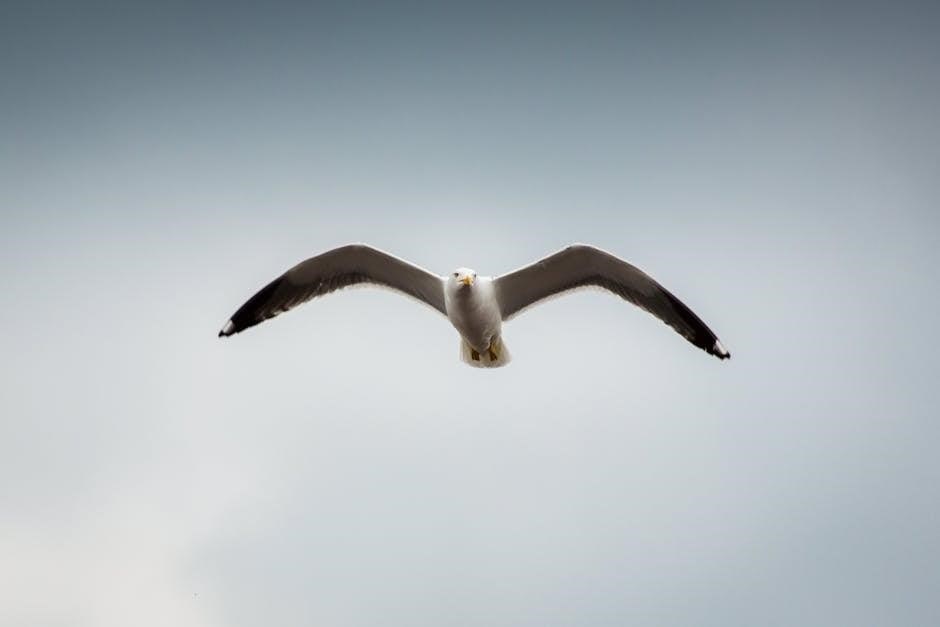
Educational Significance of “Lord of the Flies”
Lord of the Flies is a significant educational resource, exploring human nature, morality, and societal structures. Its inclusion in school curricula fosters critical thinking and ethical discussions.
8.1 Curriculum Inclusion
Lord of the Flies is widely included in school curricula due to its exploration of human nature, morality, and societal structures. Its themes of civilization vs. savagery and leadership resonate deeply, making it a valuable tool for fostering critical thinking and ethical discussions. The availability of the novel in free PDF formats enhances accessibility, allowing educators to easily integrate it into lesson plans and students to engage with its profound insights without financial barriers.
8.2 Teaching Strategies
Teachers often use Lord of the Flies to explore themes like morality and leadership. Strategies include group discussions, character analysis, and symbolic interpretation. The free PDF version allows educators to easily share annotated texts, facilitating classroom debates and reflective essays. Activities like role-playing the island scenario or creating visual representations of the novel’s themes engage students. These methods help students critically analyze Golding’s exploration of human nature, fostering deeper understanding and collaboration.
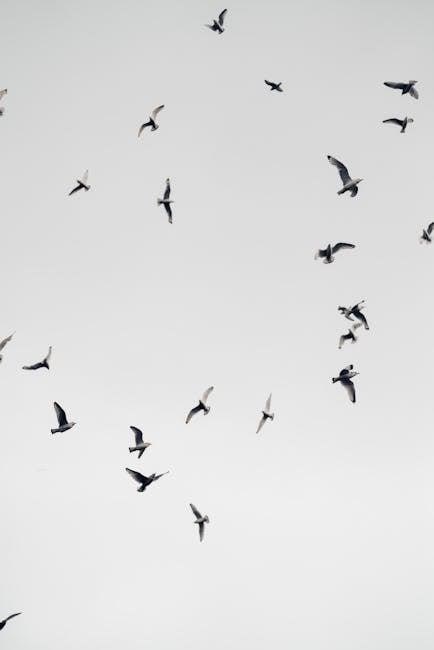
William Golding’s Background
William Golding, born in 1911, was a British novelist and playwright. His early life and naval experiences deeply influenced his writing. Lord of the Flies brought him acclaim, earning a Nobel Prize in 1983. Golding’s work explores human nature, blending philosophical insights with compelling narratives. He passed away in 1993, leaving a legacy as one of the 20th century’s most influential writers.
9.1 Early Life and Influences
William Golding was born in 1911 in Cornwall, England, to a family of modest means. His father, a scientist, and mother, a musician, instilled in him a love for learning and creativity. Golding studied natural sciences at Oxford but later shifted to literature, reflecting his passion for storytelling. His experiences in the Royal Navy during World War II profoundly shaped his worldview, influencing themes of human nature in Lord of the Flies. Teaching after the war further deepened his insights into youthful behavior and societal dynamics.
9.2 Writing Style and Philosophy
William Golding’s writing style in Lord of the Flies is sparse yet allegorical, reflecting his philosophical exploration of human nature. His prose often juxtaposes innocence with savagery, using the island as a microcosm of society. Golding’s belief in the inherent darkness of human nature, shaped by his wartime experiences, is central to his work. His philosophy questions civilization’s thin veneer, suggesting that primal instincts lurk beneath. This duality is masterfully woven into the novel’s narrative, making it a profound commentary on humanity’s moral struggles.

Cultural Impact of “Lord of the Flies”
Lord of the Flies has profoundly influenced literature and society, sparking debates on human nature. Its themes resonate globally, with adaptations and new drafts celebrating its enduring relevance.
10.1 Influence on Literature
Lord of the Flies has left an indelible mark on literature, inspiring countless authors with its exploration of human nature and societal structures. Its themes of survival and morality have influenced modern writers, while its psychological depth has become a benchmark for literary analysis. The novel’s adaptation into TV shows and stage productions further highlights its cultural significance, ensuring its relevance across generations. Its availability in free PDF formats has also made it accessible for educational purposes, cementing its place in literary history.
10.2 Social and Political Relevance
Lord of the Flies remains socially and politically relevant, offering insights into human behavior under stress. Its exploration of power struggles, leadership, and societal breakdown mirrors real-world political dynamics. The novel critiques authoritarianism and highlights the dangers of unchecked power, resonating with contemporary discussions on governance and democracy. Its themes of fear, superstition, and groupthink align with societal challenges, making it a timeless commentary on human nature and political systems. The free PDF availability ensures its ideas reach a broader audience for reflection and debate.
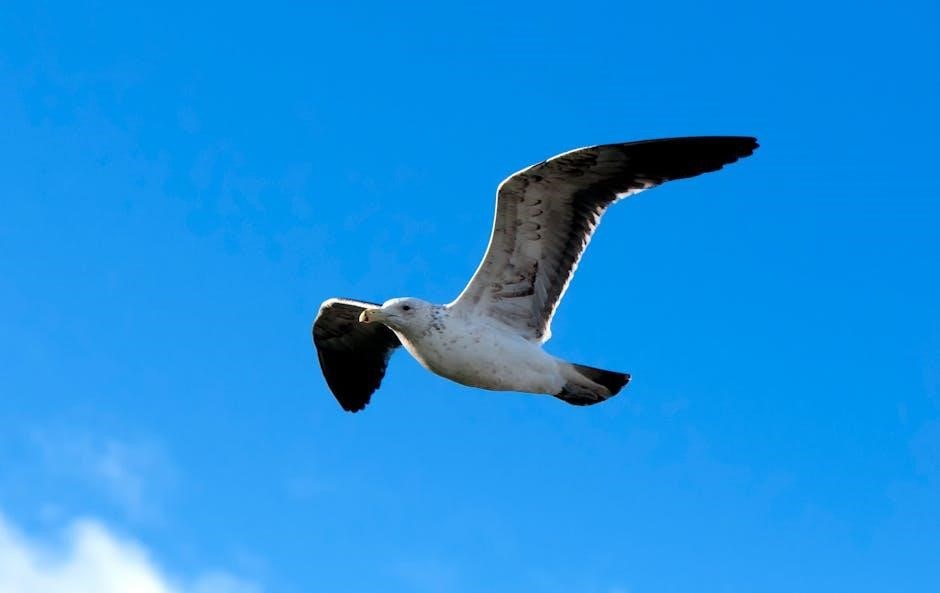
Book Reviews and Criticisms
Lord of the Flies received mixed reviews upon release but gained popularity over time. Its exploration of human nature sparked both praise and controversy, remaining a classic available as a free PDF for widespread access and discussion.
11.1 Initial Reception
When first published in 1954, Lord of the Flies received mixed reviews but gained traction through positive word of mouth. Initially, it sold modestly, with 2,383 copies in the U.S. by 1955. Critics praised its unique narrative and psychological depth, while some found its themes unsettling. Despite early modest success, the novel’s popularity grew significantly after its paperback release in 1959. Today, it remains a classic, with free PDF versions widely available for educational purposes, ensuring its enduring relevance in literary discussions.
11.2 Modern Critiques
Modern critiques of Lord of the Flies highlight its enduring relevance in exploring human nature and societal structures. The novel’s themes of power, fear, and savagery resonate strongly today, making it a staple in educational curricula. Recent adaptations, such as the television series by Jack Thorne, have introduced the story to new audiences. Additionally, the release of William Golding’s original manuscripts for the novel’s 70th anniversary has sparked fresh scholarly interest, offering deeper insights into its creation and timeless appeal.
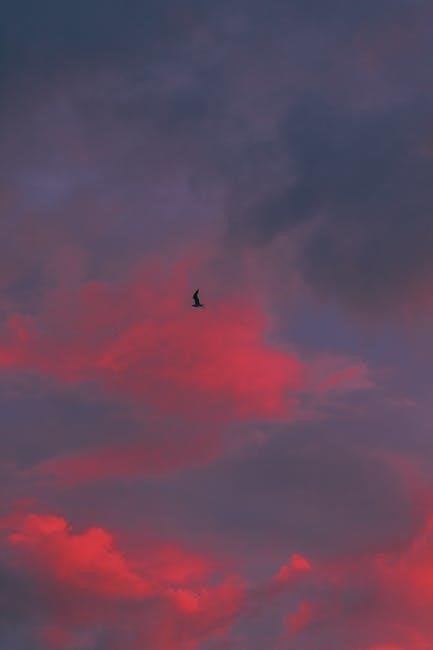
Reading Guides and Resources
Lord of the Flies is supported by numerous study guides, summaries, and discussion questions, available online. Free PDF versions of the novel and its analysis are widely accessible, aiding readers in deeper exploration of its themes and symbolism.
12.1 Study Guides and Summaries
Free PDF versions of Lord of the Flies are complemented by detailed study guides and summaries, offering insights into themes, characters, and symbolism. These resources, widely available online, provide chapter-by-chapter analyses, helping readers grasp Golding’s exploration of human nature. Summaries highlight key plot points, while study guides delve into discussion questions and essay topics, making them invaluable for educational purposes and deeper understanding of the novel’s complex moral and societal themes.
12.2 Discussion Questions
Free PDF versions of Lord of the Flies often include discussion questions that provoke critical thinking about the novel’s themes, characters, and moral dilemmas. These questions explore the symbolism of the conch shell, the boys’ descent into savagery, and the clash between Ralph and Jack. They also invite readers to reflect on human nature, societal structures, and the ethics of survival. Such resources are invaluable for group discussions, encouraging deeper engagement with Golding’s thought-provoking narrative and its timeless relevance to human behavior and society.
Moral and Ethical Questions
Lord of the Flies raises profound moral questions about human nature, societal structures, and survival ethics. The novel challenges readers to reflect on the boys’ choices and consequences, offering insights into the duality of human behavior and the ethical dilemmas faced when civilization fades.
13.1 Human Nature and Society
William Golding’s Lord of the Flies explores the inherent savagery within humans when societal constraints are removed. The novel depicts boys descending into chaos, revealing how fear, power struggles, and primal instincts dominate. This mirrors Golding’s belief that human nature is inherently flawed, with civilization acting as a thin veil. The island becomes a microcosm of society, highlighting how quickly moral structures crumble without authority. The novel raises profound questions about humanity’s capacity for both good and evil, challenging readers to reflect on their own moral foundations.
13.2 Ethics of Survival
In Lord of the Flies, the ethics of survival are deeply intertwined with moral decay. The boys’ descent into savagery reveals how survival instincts can override ethical considerations. The novel questions whether survival justifies actions like stealing, manipulation, or violence. The conch shell, once a symbol of order, loses its power as fear and primal urges dominate. Golding challenges readers to consider the fine line between survival and morality, highlighting how quickly ethical standards erode when societal norms collapse.
Lord of the Flies remains a profound exploration of human nature, morality, and societal structures. Its themes of survival and civilization continue to resonate, making it a vital educational resource, especially in its accessible free PDF format.
14.1 Final Thoughts on the Novel
Lord of the Flies is a masterful exploration of human nature, society, and morality. Its themes of civilization versus savagery resonate deeply, offering timeless insights into humanity’s duality. The novel’s psychological depth and Golding’s vivid storytelling make it a compelling read. As a free PDF, it remains accessible for educational purposes, ensuring its lessons on survival, ethics, and leadership continue to inspire reflection and discussion among readers worldwide.
14.2 Relevance in Contemporary Society
Lord of the Flies remains a powerful allegory for modern society, exploring themes of power, fear, and the breakdown of social norms. Its examination of human nature’s darker aspects resonates with contemporary issues like political polarization and societal fragmentation. The novel’s availability as a free PDF ensures its continued relevance, making it accessible for new generations to reflect on its timeless warnings about the fragility of civilization and the dangers of unchecked ambition.
